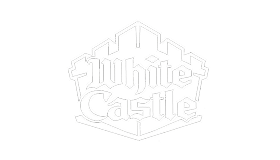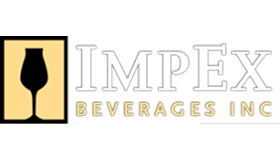Problem
When Task Ownership Gets Lost in the Stack
A North America–based accounting and advisory firm managing hundreds of clients was running its operations across multiple disconnected platforms—Airtable for data tracking, ClickUp for task management, and Stacker as a client interaction layer. This setup caused workflow fragmentation and manual effort in assigning roles and managing progress, especially during onboarding and monthly financial close processes.
The team lacked a centralized method to identify unassigned clients or track workflow handoffs across bookkeeping, accounting coordination, and financial leadership. Subtasks were either tracked in bulk or embedded in loosely managed checklists, creating ambiguity over task status and ownership. This complexity hindered visibility, slowed response times, and introduced inconsistencies in how teams executed routine processes.
They needed a system that allowed them to consolidate operations, reduce tool sprawl, and create visibility into every client’s workflow—from onboarding through ongoing service delivery.
Q1
Solution
SmartSuite Connects the Dots—and the Data
The accounting firm implemented SmartSuite to create a centralized, automation-driven operational platform. The onboarding process was rebuilt to dynamically assign client owners based on role fields. As soon as a client’s onboarding status changed to “active,” automations triggered the creation of templated task sets with SmartDoc instructions embedded.
SmartSuite’s role-based logic ensured tasks were assigned to the right team members immediately, without manual intervention. The team configured recurring task rules for monthly financial closes using frequency fields and completion-based automations. Each record included all relevant documentation in SmartDocs, simplifying training and reducing handoff errors.
Additionally, dashboards were tailored to show tasks filtered by current user or client group. Views were grouped by role and task type, giving team members personalized access to only what they needed. Complex tracking logic—such as bank reconciliation steps or month-end progress—was condensed into simplified records with rich documentation rather than split into overwhelming subtasks.
The team also consolidated Airtable’s fragmented schema into structured SmartSuite solutions, mapping out essential tables like clients, staff, teams, and service assignments in a more intuitive architecture.
Q2
Result
Built to Deliver, Ready to Grow
SmartSuite now serves as the single source of truth for client operations at the accounting firm. The team has eliminated three major tools, streamlined workflows, and dramatically improved visibility into task ownership and client status. Bookkeepers, ACs, and CFOs see only the tasks relevant to their role, all auto-assigned and tracked in real time.
The onboarding pipeline runs on structured logic, reducing turnaround times and ensuring every client moves seamlessly from intake to long-term service. Month-end close processes—previously managed inconsistently—now follow a repeatable, documented structure across all clients.
The SmartSuite rollout also allowed the firm to plan more confidently for future growth. With flexible task templates, automated reassignment logic, and dynamic dashboards, the operations team gained full control over how work gets done. The new system not only replaced existing tools but gave the organization a blueprint to scale efficiently.






-min.jpeg)
-min.png)
-min.png)

%2520(1).jpeg)


%2520(1).jpeg)


-min.jpeg)
-min.png)
-min.png)
.jpeg)
.png)
.png)
.jpeg)
.png)
.png)
-min.jpeg)


.jpeg)
.png)
.png)



-min.jpeg)
-min.png)
-min.png)
-min.jpeg)
-min.png)
-min.png)

.png)
.png)



-min.jpeg)
.png)
.png)
-min.jpeg)
-min.png)
-min.png)



-min.jpeg)
-min.png)
-min.png)



-min.jpeg)
-min.png)
-min.png)
-min.jpeg)
.png)
.png)
.jpeg)
.png)
.png)
-min.jpeg)
-min.png)
-min.png)



-min.jpeg)
-min.png)
-min.png)
-min.jpeg)
-min.png)
-min.png)

-min.png)
-min.png)
-min.jpeg)
-min.png)

-min.jpeg)
.png)
.png)
%2520(1).jpeg)



.png)
.png)
%2520(1).jpeg)
.png)
.png)
-min.jpeg)
%2520(1).png)
%2520(1).png)



%2520(1).jpeg)
%2520(1).png)
%2520(1).png)
%2520(1).jpeg)
.png)
.png)

.png)
-min.png)
-min.jpeg)
-min.png)
-min.png)



-min.jpeg)
-min.png)
-min.png)
.jpeg)
.png)
.png)
-min.jpeg)
-min.jpeg)


-min.jpeg)
-min.png)
-min.png)
-min.jpeg)
-min.png)
-min.png)
-min.jpeg)
-min.png)
-min.png)
%2520(1).jpeg)
.png)
.png)
-min.jpeg)
.png)
.png)
-min.jpeg)
-min.png)
-min.png)



-min.jpeg)
-min.png)
-min.png)
-min.jpeg)
.png)
.png)



%2520(1).jpeg)
.png)
.png)
.jpg)

%2520(1).jpeg)









.jpg)
-min.jpeg)
-min.png)
-min.png)



.jpg)
.png)
.png)
-min.jpeg)
-min.png)
-min.png)

.png)
.png)
.jpg)
.jpg)
.jpg)
.jpg)
















.png)
.png)






-min.jpeg)
-min.png)
-min.png)
-min.jpeg)
.png)
.png)
.jpg)
.jpg)
.jpg)
.jpg)



.jpg)
-min.png)
-min.png)
.jpg)
.jpg)
.jpg)
%20(1).jpg)
-min.png)
-min.png)
.jpg)
.jpg)
.jpg)
.jpg)
.jpg)
.jpg)
.jpg)
-min.jpeg)
-min.png)
-min.png)
.jpeg)
.png)
.png)


